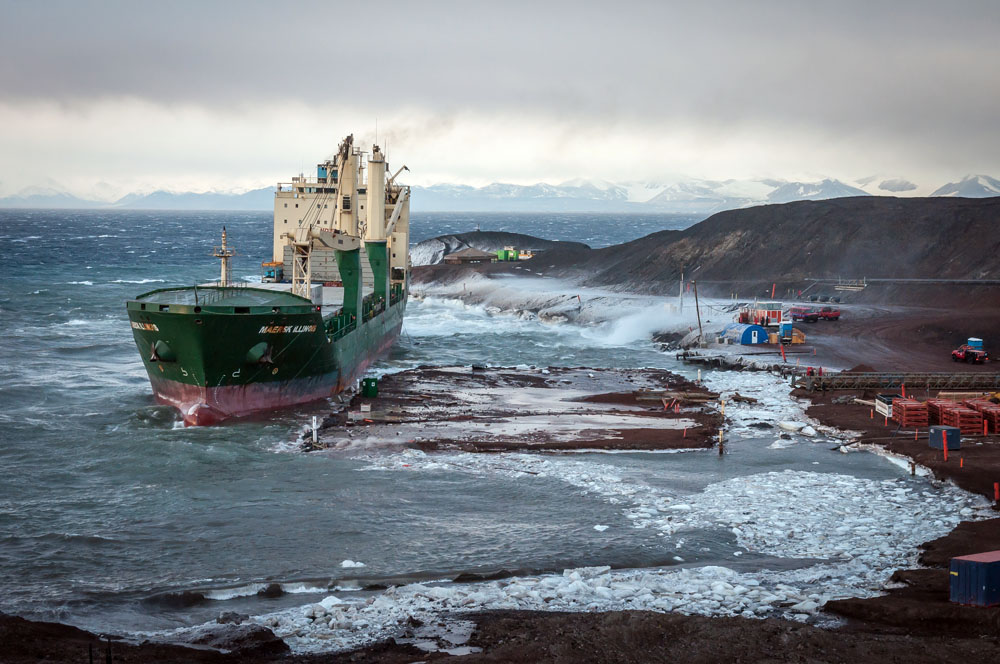|
Page 2/3 - Posted February 21, 2014
Off the shelf The breadth of open water in McMurdo Sound, coupled with the fierce storm in early February, makes the latest events seem the worst to hit the region in recent memory. Glaciologist Douglas MacAyeal During that first decade of the 21st century, McMurdo Sound was so ice-choked that ships had difficulty even reaching the ice pier. “Keep in mind that the reason McMurdo was a hub of activity since 1902 was because sailing ships used to be able to get into the sound in summer, as sea ice was relatively broken up and blown out,” he said, “so I’m sure that the recent conditions are not entirely without precedence.” Ice shelves farther north, particularly around the Antarctic Peninsula region, have collapsed in recent decades. Even the mighty and more southerly Ross Ice Shelf Some calving of the McMurdo Ice Shelf occurred in February 2011 when the multi-year ice that had clogged McMurdo Sound for more than a decade finally broke free. Photo Credit: Jeff Scanniello/Antarctic Photo Library
Icebergs float by New Zealand's Scott Base during the February 2011 breakout of sea ice.
Kelly Brunt “It looks to me like the ice-height scale is on the same order as the wave-height scale,” Brunt said during an e-mail exchange with MacAyeal. “So, to me, those ‘bergs’ look like they could be McMurdo [Ice] Shelf bits, but they could also be multi-multi-year fast ice.” Brunt said a small sliver of the McMurdo Ice Shelf about the size of Manhattan calved off during the February 2011 event. That released many large floes of multi-year ice that had previously been welded to the ice shelf front. But not all the multi-year ice broke free three years ago. Brunt said there is a region in the extreme southwest corner of McMurdo Sound where it appears the multi-year sea ice had been trapped by the Dailey Islands and McMurdo Ice Shelf. Using a series of recent NASA satellite images, Brunt tracked the breakup of the annual sea ice. Ice from the south of the Dailey Islands eventually floated out to sea as well. “So, I am thinking that the relatively thin ‘bergs’ are actually relatively thick ‘floes’ from that [southwest] region,” she said. MacAyeal said the idea that the McMurdo Ice Shelf is more stable than those along the Antarctic Peninsula isn’t necessarily true just because it is located farther south. The ice shelves on the west side of the peninsula, in particular, are subject to winds that “create ‘down slope’ warming, as they cross the mountainous spine of the peninsula and rush out on the ice shelves. “The McMurdo Ice Shelf is subject to strong ablation because of its peculiar situation relative to the mountain ridge of Minna Bluff and Mount Discovery,” he explained. “McMurdo [Ice Shelf] is very analogous to the peninsula ice shelves on some level.” |



For USAP Participants |
For The Public |
For Researchers and EducatorsContact UsU.S. National Science FoundationOffice of Polar Programs Geosciences Directorate 2415 Eisenhower Avenue, Suite W7100 Alexandria, VA 22314 Sign up for the NSF Office of Polar Programs newsletter and events. Feedback Form |


